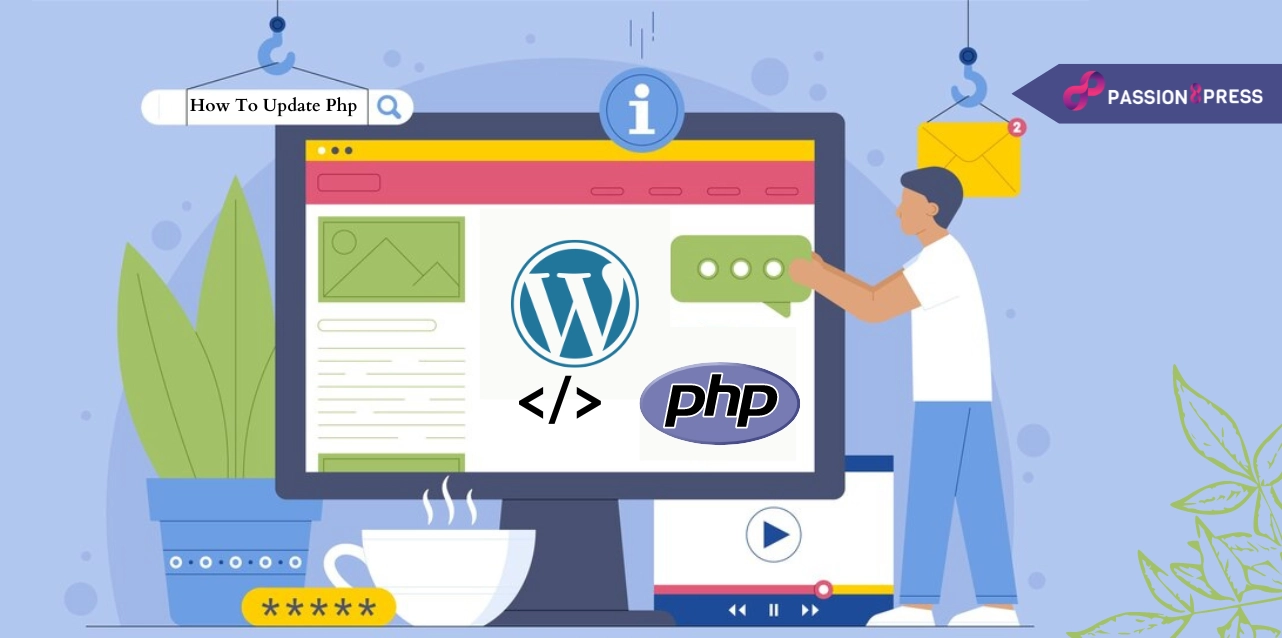Keeping your WordPress website up to date is crucial for security, performance, and compatibility with the latest features. One essential aspect of this maintenance is updating PHP, the scripting language that powers WordPress. But nowadays, people frequently encounter situations where they feel hindered and say, ‘ How to update PHP in WordPress?’
Updating PHP ensures that your WordPress site remains secure against vulnerabilities and exploits. It also allows you to take advantage of performance improvements and new functionalities offered by newer PHP versions. However, updating PHP can sometimes seem daunting, especially if you’re unfamiliar with the process.
In this comprehensive guide, we’ll break down the steps involved in updating PHP for your WordPress website, regardless of your hosting environment. Whether you’re a beginner or an experienced WordPress user, understanding how to update PHP safely and efficiently is essential for maintaining the health and security of your website. Let’s dive in and ensure your WordPress site stays optimized and secure with the latest PHP version. So let’s discover how to update Php in WordPress.
Hit ‘Play’ Button & Tune Into The Blog!
What Is PHP In WordPress?
PHP is often known as a Hypertext processor. It is a widely used programming language in web development. It primarily functions on the server side where the website is hosted. It serves as the programming backbone for WordPress sites.
But what role does PHP play on the web server? Essentially, PHP dynamically generates web pages. Unlike static websites, where HTML files are pre-stored on the server, dynamic pages get assembled by the server upon request. When a visitor seeks a web page, the server’s PHP module processes the request, executes PHP code, and crafts an HTML page on the fly. The server then dispatches the complete HTML file to the visitor’s web browser.
Before you explore how to update php in WordPress, let’s understand what the work of PHP in WordPress page.
What is PHP’s role in WordPress?
Instead of storing individual HTML files for each website page, WordPress relies on numerous PHP files to manage different page components like headers, footers, and comment sections. These files, identifiable by their “.php” extension, are integral to WordPress architecture.
In WordPress, PHP primarily retrieves page content from the database and transforms it into web pages. When a page request is received, PHP retrieves relevant content from the WordPress database, converts it into HTML, and delivers it to the visitor.
Why adopt this approach? The answer lies in flexibility.
PHP empowers WordPress developers to build blog websites, create themes and plugins using their own PHP files, which can seamlessly integrate WordPress database content. This setup allows for effortless plugins and theme swapping without the need to regenerate pages. Instead, every page is dynamically generated upon request, ensuring real-time customization.
Some WordPress websites may opt for a PHP framework to achieve a leaner, more efficient website structure.
Reasons To Update PHP In WordPress
Before going into the section ‘How to update PHP in WordPress’, it is essential to understand why you should update your PHP. The following are the essential reasons to update your PHP.
Enhanced Speed
PHP developers continually refine the language to optimize resource usage and introduce new features. Consequently, each PHP update ensures improved performance for your WordPress site, engaging visitors and potentially boosting search engine rankings.
To discover more approaches to speed up your WordPress site, delve into our suggestions for optimizing WordPress performance.
Heightened Security
Well, you wanted to know ‘how to update PHP in WordPress’? Right. But did you know updating php ensures higher security?
PHP’s widespread usage remains a prime target for cyber threats. New PHP releases incorporate patches to address vulnerabilities exploited by hackers. Running an outdated PHP version leaves your WordPress site vulnerable to malware, viruses, and unauthorized access.
However, safeguarding your site requires more than PHP updates. Refer to our WordPress security guide for strategies to fortify your WordPress installation.
Enhanced Compatibility
WordPress websites comprise various components, with updates often cascading across the ecosystem. Leading WordPress themes developer to operate seamlessly with the latest PHP version. Failure to update PHP may lead to compatibility issues between core files, plugins, and themes, potentially disrupting your website’s functionality.
How To Edit PHP in WordPress?
While you are impatient to discover how to update php in WordPress, why not have a look at the editing process of Php? Do not worry, it won’t take a lot of time.
Editing PHP code through the WordPress dashboard requires caution. Any alterations to PHP files should be approached carefully, as errors in PHP syntax can swiftly disrupt your website’s functionality, necessitating the restoration of the original file.
Another consideration against directly modifying PHP code is the availability of plugins catering to various customization needs on your website. These plugins offer solutions for tasks such as creating custom post types or incorporating tracking code into your website’s header.
Therefore, we advise you to explore alternative options thoroughly before resorting to PHP code modifications.
To edit PHP code via your WordPress dashboard, follow these steps:
- Access the Theme Editor by navigating to Appearance > Theme Editor.
- Select your active theme.
- Locate functions.php (Theme Functions) within the Theme Editor.
Exercise caution when making changes to PHP code, and consider seeking assistance or using plugins before resorting to direct modifications.
If you need professional guidance in editing PHP in WordPress or you are looking for outsourcing WordPress development services, check out Passion8Press.
Passion8Press simplifies the process of offering a customized approach to theme, and plugin development. By providing access to skilled WordPress developers, this platform facilitates seamless execution from idea to realization, resulting in visually captivating and effective websites tailored to specific needs.
Passion8Press customizes plugins and themes to meet desired functionality and aesthetics. The platform prioritizes specifications such as speed optimization, ongoing website editing capabilities, robust security features, and responsive designs compliant with Google’s guidelines.
Read More
A Beginner’s Guide For WordPress Theme Developer
How To Make A Blog Website In WordPress?
How To Update PHP In WordPress?
So finally, the most awaited section is here. Follow the below-mentioned steps and install your latest PHP version.
Verify PHP Version: Check your current PHP version within WordPress by navigating to Tools > Site Health in the administrator dashboard. WordPress will indicate if an update is necessary.
Backup Your Website: Before updating PHP, it’s essential to create a backup of your WordPress site to ensure data safety in case of issues during the update process.
Update WordPress Core, Plugins, and Theme: Ensure all themes, plugins, and core files are up to date to maintain compatibility with PHP 8.1. Check for recommended updates under Dashboard > Updates and initiate them if prompted.
Update PHP Version: In the hustle of ‘how to update PHP in wordpress’ do not forget to contact your hosting provider. They will provide you with PHP or perform a manual update through your hosting control panel, such as cPanel. Select PHP Version and set it to PHP 8.1 if available.
Verify Site Update: Allow at least 30 minutes for the PHP update to take effect. Test the functionality of your WordPress site and plugins individually. Contact your hosting provider for assistance if you need to revert to the previous PHP version via cPanel.
By completing these steps, your site can benefit from improved performance, enhanced functionality, increased security, and visitor satisfaction with PHP 8.1.
Did You Learn How To Update PHP In WordPress?
Updating PHP in WordPress is crucial for maintaining website security, compatibility, and performance. By following the outlined steps through the website, owners can ensure a seamless transition to PHP 8.1. Regular PHP updates contribute to improved functionality, enhanced security measures, and better overall visitor experience.
Embracing these updates reflects a commitment to staying current with technology trends and safeguarding the integrity of your WordPress website in the long run. However, utilizing the services of Passion8Press makes the work easier and integrates the process into a seamless task. You can also hire WordPress developer service that would assist you in updating your php version and improving your overall WordPress development.
By keeping your PHP version up to date, you can ensure that your WordPress website remains optimized and resilient in the ever-evolving landscape of web development.










